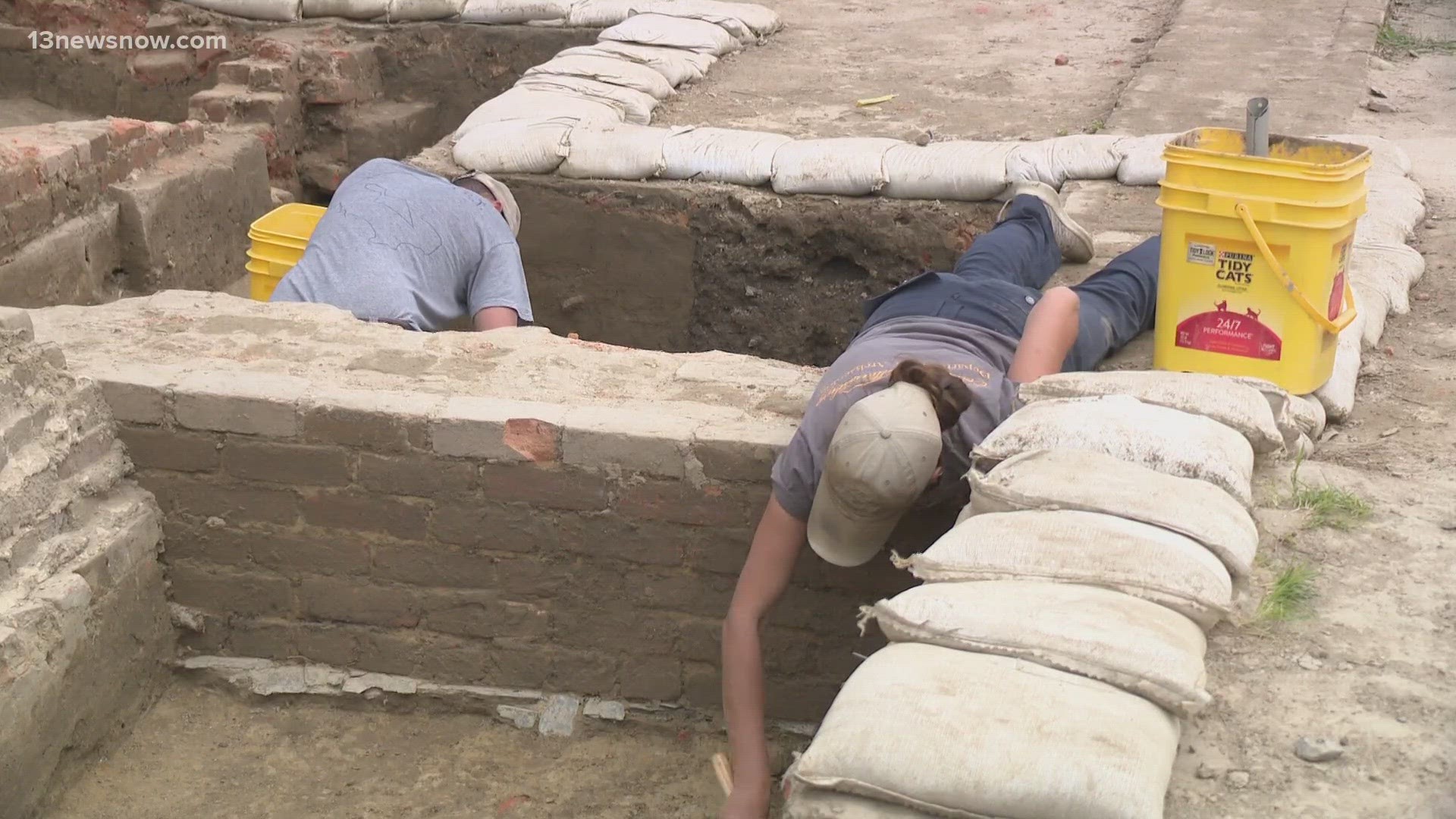WILLIAMSBURG, Va. — After more than two years, the archaeological dig at Williamsburg's historic First Baptist Church is over.
The excavation at the site of one of the oldest known churches in the country ended on Friday.
Scientists at Colonial Williamsburg will continue to research uncovered artifacts through the end of 2023.
Meanwhile, they are giving descendants of the church a first look at some of the findings. Inside the Colonial Williamsburg's archaeological lab, scientists put dozens of items on display for Dennis Gardner and others to view.
“It’s very meaningful, very touching because I see a lot of people here that I recognize," Gardner said about a photo of the congregation inside a former church building in the 1940s.
The black-and-white photograph depicts dozens of people, including a man holding a baby in the front row of the church.
“That’s the christening of the young lady, Dr. [Julie] Grace, who is also an associate minister at our church now,” recalled Gardner.
"That's Hulon Willis, the first [Black person enrolled] at William & Mary," he said of the man holding the child.
Gardner, 88, is the oldest, active member of the church, and started going as a child.
Free and enslaved African Americans formed the church in 1776.
Since December 2020, archaeologists have been digging at the site near the intersection of Nassau and Francis streets, to uncover what history they can find.
The work, with the blessing and guidance of the First Baptist Church descendant community, has led to major discoveries. Those findings include a pair of building foundations dating back to the early 1800s.
However, for the first time Friday, scientists are showing descendants some of the artifacts uncovered. Those include pieces of stained glass and tools possibly used to teach freed slaves how to read and write.
"A couple of these are buttons from the Civil War, which tells the story of the church serving as a makeshift hospital during the Civil War," said Colonial Williamsburg archaeologist Kara Garvey Fleischer.
The display also included newspaper clippings detailing when a tornado destroyed the original building before the second facility, where Gardner grew up attending, was built in 1856.
Garvey Fleischer is part of a team that has worked behind the scenes to study the artifacts once covered by a parking lot.
"Finally you get to take a step back and everything comes together, and that’s amazing. You see it in their eyes and then your eyes can light up,” she said.
A previous excavation in the 1950s did not garner similar results. Gardner remembers hoping more would be done then.
“I remember them doing this excavation, and I don’t understand why they didn’t find something. I think it was a lack of interest," he said.
In March of 2022, experts found nearly 30 burials. As of now, they’ve discovered 60, according to Jack Gary, Colonial Williamsburg’s director of archaeology.
The First Baptist Church descendant community voted to have archaeologists excavate three of them, to learn more about the race, age and sex of the people buried there.
On April 6, scientists and the descendant community will hold a special ceremony to share the DNA analysis of the studied remains.
Archaeologists might be able to tell things about the remains like the person's age at death, stature, major injuries, illnesses, physical stresses, the general quality of life and place of origin.
Ultimately, the results may also connect the deceased to their living ancestors today.
Most of the descendants who were children when the church was located on Nassau Street are now in their late 80s.
In February, the project received a $3 million grant to fund efforts, including the reconstruction of the church’s original structure.
Once rebuilt, Colonial Williamsburg plans to open the meeting house to the public by 2026.

